The U.S. Intelligence Community is composed of the following 18 organizations:
- Two independent agencies—the Office of the Director of National Intelligence (ODNI) and the Central Intelligence Agency (CIA);
- Nine Department of Defense elements—the Defense Intelligence Agency (DIA), the National Security Agency (NSA), the National Geospatial- Intelligence Agency (NGA), the National Reconnaissance Office (NRO), and intelligence elements of the five DoD services; the Army, Navy, Marine Corps, Air Force, and Space Force.
- Seven elements of other departments and agencies—the Department of Energy’s Office of Intelligence and Counter-Intelligence; the Department of Homeland Security’s Office of Intelligence and Analysis and U.S. Coast Guard Intelligence; the Department of Justice’s Federal Bureau of Investigation and the Drug Enforcement Administration’s Office of National Security Intelligence; the Department of State’s Bureau of Intelligence and Research; and the Department of the Treasury’s Office of Intelligence and Analysis
- Air Force Intelligence
- Army Intelligence
- Central Intelligence Agency
- Coast Guard Intelligence
- Defense Intelligence Agency
- Department of Energy
- Department of Homeland Security
- Department of State
- Department of the Treasury
- Drug Enforcement Administration
- Federal Bureau of Investigation
- Marine Corps Intelligence
- National Geospatial-Intelligence Agency
- National Reconnaissance Office
- National Security Agency
- Navy Intelligence
- Space Force Intelligence
Air Force Intelligence
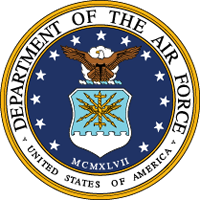
The U.S. Air Force Intelligence, Surveillance, and Reconnaissance (USAF ISR) Enterprise is America's leading provider of finished intelligence derived from airborne, space, and cyberspace sensors. The USAF ISR Enterprise delivers decision advantage in order to enable commanders to achieve kinetic and non-kinetic effects on targets anywhere on the globe in support of national, strategic, operational, and tactical requirements. The AF/A2 is the USAF's Senior Intelligence Officer and is responsible for functional management of all Air Force global integrated ISR capabilities, including oversight of planning, programming, and budgeting; developing and implementing the Air Force policies and guidance for managing Air Force global integrated ISR activities; and professional development, training, education, readiness, and deployment of 50,000 military and civilian United States Air Force intelligence personnel.
Army Intelligence
 U.S. Army Intelligence (G-2) is responsible for policy formulation, planning, programming, budgeting, management, staff supervision, evaluation, and oversight for intelligence activities for the Department of the Army. The G-2 is responsible for the overall coordination of the five major military intelligence (MI) disciplines within the Army: Imagery Intelligence, Signals Intelligence, Human Intelligence, Measurement and Signature Intelligence, and Counterintelligence and Security Countermeasures.
U.S. Army Intelligence (G-2) is responsible for policy formulation, planning, programming, budgeting, management, staff supervision, evaluation, and oversight for intelligence activities for the Department of the Army. The G-2 is responsible for the overall coordination of the five major military intelligence (MI) disciplines within the Army: Imagery Intelligence, Signals Intelligence, Human Intelligence, Measurement and Signature Intelligence, and Counterintelligence and Security Countermeasures.
Central Intelligence Agency
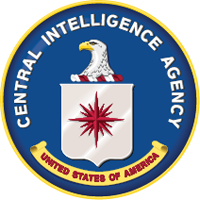 The Central Intelligence Agency (CIA) is responsible for providing national security intelligence to senior U.S. policymakers. The CIA director is nominated by the president and confirmed by the Senate. The director manages the operations, personnel, and budget of the CIA and acts as the National Human Source Intelligence manager. The CIA is separated into seven basic components: Directorate of Analysis, Directorate of Operations, Directorate of Science and Technology, Directorate of Support, Directorate of Digital Innovation, Mission Centers, and Offices of the Director. They carry out “the intelligence cycle,” the process of collecting, analyzing, and disseminating intelligence information to top U.S. government officials.
The Central Intelligence Agency (CIA) is responsible for providing national security intelligence to senior U.S. policymakers. The CIA director is nominated by the president and confirmed by the Senate. The director manages the operations, personnel, and budget of the CIA and acts as the National Human Source Intelligence manager. The CIA is separated into seven basic components: Directorate of Analysis, Directorate of Operations, Directorate of Science and Technology, Directorate of Support, Directorate of Digital Innovation, Mission Centers, and Offices of the Director. They carry out “the intelligence cycle,” the process of collecting, analyzing, and disseminating intelligence information to top U.S. government officials.
Coast Guard Intelligence
 The Coast Guard's broad responsibilities include protecting citizens from the sea (maritime safety), protecting America from threats delivered by the sea (maritime security), and protecting the sea itself (maritime stewardship). The Coast Guard's persistent presence in the maritime domain, due to its diverse mission sets and broad legal authorities, allows it to fill a unique niche within the Intelligence Community. Because of its unique access, emphasis, and expertise in the maritime domain Coast Guard Intelligence can collect and report intelligence that not only supports Coast Guard missions, but also supports national objectives. Coast Guard Intelligence strives to create decision advantage to advance U.S. interests by providing timely, actionable, and relevant intelligence to shape Coast Guard operations, planning, and decision-making, and to support national and homeland security intelligence requirements.
The Coast Guard's broad responsibilities include protecting citizens from the sea (maritime safety), protecting America from threats delivered by the sea (maritime security), and protecting the sea itself (maritime stewardship). The Coast Guard's persistent presence in the maritime domain, due to its diverse mission sets and broad legal authorities, allows it to fill a unique niche within the Intelligence Community. Because of its unique access, emphasis, and expertise in the maritime domain Coast Guard Intelligence can collect and report intelligence that not only supports Coast Guard missions, but also supports national objectives. Coast Guard Intelligence strives to create decision advantage to advance U.S. interests by providing timely, actionable, and relevant intelligence to shape Coast Guard operations, planning, and decision-making, and to support national and homeland security intelligence requirements.
The Coast Guard became a member of the Intelligence Community Dec. 28, 2001.
Defense Intelligence Agency
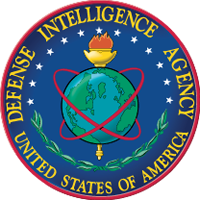 The Defense Intelligence Agency is a Department of Defense combat support agency. With more than 16,500 military and civilian employees worldwide, DIA is a major producer and manager of foreign military intelligence and provides military intelligence to warfighters, defense policymakers and force planners, in the DOD and the Intelligence Community, in support of U.S. military planning and operations and weapon systems acquisition. The DIA director serves as principal adviser to the secretary of defense and to the chairman of the Joint Chiefs of Staff on matters of military intelligence. The director also chairs the Military Intelligence Board, which coordinates activities of the defense intelligence community.
The Defense Intelligence Agency is a Department of Defense combat support agency. With more than 16,500 military and civilian employees worldwide, DIA is a major producer and manager of foreign military intelligence and provides military intelligence to warfighters, defense policymakers and force planners, in the DOD and the Intelligence Community, in support of U.S. military planning and operations and weapon systems acquisition. The DIA director serves as principal adviser to the secretary of defense and to the chairman of the Joint Chiefs of Staff on matters of military intelligence. The director also chairs the Military Intelligence Board, which coordinates activities of the defense intelligence community.
Department of Energy
 The U.S. Department of Energy's Office of Intelligence and Counterintelligence is responsible for the intelligence and counterintelligence activities throughout the DOE complex, including nearly 30 intelligence and counterintelligence offices nationwide. The mission is to protect, enable, and represent the vast scientific brain trust resident in DOE's laboratories and plants. The office protects vital national security information and technologies, representing intellectual property of incalculable value, and provides unmatched scientific and technical expertise to the U.S. government to respond to foreign intelligence, terrorist and cyber threats, to solve the hardest problems associated with U.S. energy security, and to address a wide range of other national security issues.
The U.S. Department of Energy's Office of Intelligence and Counterintelligence is responsible for the intelligence and counterintelligence activities throughout the DOE complex, including nearly 30 intelligence and counterintelligence offices nationwide. The mission is to protect, enable, and represent the vast scientific brain trust resident in DOE's laboratories and plants. The office protects vital national security information and technologies, representing intellectual property of incalculable value, and provides unmatched scientific and technical expertise to the U.S. government to respond to foreign intelligence, terrorist and cyber threats, to solve the hardest problems associated with U.S. energy security, and to address a wide range of other national security issues.
Department of Homeland Security
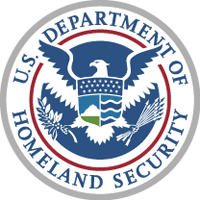 The Office of Intelligence and Analysis is responsible for using information and intelligence from multiple sources to identify and assess current and future threats to the U.S. DHS Intelligence focuses on four strategic areas: Promote understanding of threats through intelligence analysis; Collect information and intelligence pertinent to homeland security; Share information necessary for action; and Manage intelligence for the homeland security enterprise. The Under Secretary for I&A also serves as DHS’ chief intelligence officer and is responsible to both the secretary of Homeland Security and the director of National Intelligence.
The Office of Intelligence and Analysis is responsible for using information and intelligence from multiple sources to identify and assess current and future threats to the U.S. DHS Intelligence focuses on four strategic areas: Promote understanding of threats through intelligence analysis; Collect information and intelligence pertinent to homeland security; Share information necessary for action; and Manage intelligence for the homeland security enterprise. The Under Secretary for I&A also serves as DHS’ chief intelligence officer and is responsible to both the secretary of Homeland Security and the director of National Intelligence.
Department of State
 The Bureau of Intelligence and Research provides the Secretary of State with timely, objective analysis of global developments as well as real-time insights from all-source intelligence. It serves as the focal point within the Department of State for all policy issues and activities involving the Intelligence Community. The INR Assistant Secretary reports directly to the Secretary of State and serves as the Secretary's principal adviser on all intelligence matters. INR's expert, independent foreign affairs analysts draw on all-source intelligence, diplomatic reporting, INR's public opinion polling, and interaction with U.S. and foreign scholars. Their strong regional and functional backgrounds allow them to respond rapidly to changing policy priorities and to provide early warning and in-depth analysis of events and trends that affect U.S. foreign policy and national security interests.
The Bureau of Intelligence and Research provides the Secretary of State with timely, objective analysis of global developments as well as real-time insights from all-source intelligence. It serves as the focal point within the Department of State for all policy issues and activities involving the Intelligence Community. The INR Assistant Secretary reports directly to the Secretary of State and serves as the Secretary's principal adviser on all intelligence matters. INR's expert, independent foreign affairs analysts draw on all-source intelligence, diplomatic reporting, INR's public opinion polling, and interaction with U.S. and foreign scholars. Their strong regional and functional backgrounds allow them to respond rapidly to changing policy priorities and to provide early warning and in-depth analysis of events and trends that affect U.S. foreign policy and national security interests.
Department of the Treasury
 The Office of Intelligence and Analysis was established by the Intelligence Authorization Act for fiscal 2004. OIA is responsible for the receipt, analysis, collation, and dissemination of foreign intelligence and foreign counterintelligence information related to the operation and responsibilities of the Department of the Treasury. OIA is a component of the U.S. Department of the Treasury’s Office of Terrorism and Financial Intelligence (TFI). TFI marshals the Department’s intelligence and enforcement functions with the twin aims of safeguarding the financial system against illicit use and combating rogue nations, terrorist facilitators, weapons of mass destruction proliferators, money launderers, drug kingpins, and other national security threats.
The Office of Intelligence and Analysis was established by the Intelligence Authorization Act for fiscal 2004. OIA is responsible for the receipt, analysis, collation, and dissemination of foreign intelligence and foreign counterintelligence information related to the operation and responsibilities of the Department of the Treasury. OIA is a component of the U.S. Department of the Treasury’s Office of Terrorism and Financial Intelligence (TFI). TFI marshals the Department’s intelligence and enforcement functions with the twin aims of safeguarding the financial system against illicit use and combating rogue nations, terrorist facilitators, weapons of mass destruction proliferators, money launderers, drug kingpins, and other national security threats.
Drug Enforcement Administration
 The Drug Enforcement Administration is responsible for enforcing the controlled substance laws and regulations of the United States. DEA’s Office of National Security Intelligence (ONSI) became a member of the IC in 2006. ONSI facilitates full and appropriate intelligence coordination and information sharing with other members of the U.S. Intelligence Community and homeland security elements. Its goal is to enhance the U.S.’s efforts to reduce the supply of drugs, protect national security, and combat global terrorism. DEA has 21 field divisions in the U.S. and more than 80 offices in more than 60 countries worldwide.
The Drug Enforcement Administration is responsible for enforcing the controlled substance laws and regulations of the United States. DEA’s Office of National Security Intelligence (ONSI) became a member of the IC in 2006. ONSI facilitates full and appropriate intelligence coordination and information sharing with other members of the U.S. Intelligence Community and homeland security elements. Its goal is to enhance the U.S.’s efforts to reduce the supply of drugs, protect national security, and combat global terrorism. DEA has 21 field divisions in the U.S. and more than 80 offices in more than 60 countries worldwide.
Federal Bureau of Investigation
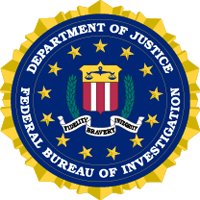 The FBI, as an intelligence and law enforcement agency, is responsible for understanding threats to our national security and penetrating national and transnational networks that have a desire and capability to harm the U.S. The Intelligence Branch is the strategic leader of the FBI’s Intelligence Program and drives collaboration to achieve the full integration of intelligence and operations, and it proactively engages with the Bureau’s partners across the intelligence and law enforcement communities. By overseeing intelligence policy and guidance, the Intelligence Branch ensures the FBI’s intelligence production remains objective and strikes the correct balance between strategic and tactical work.
The FBI, as an intelligence and law enforcement agency, is responsible for understanding threats to our national security and penetrating national and transnational networks that have a desire and capability to harm the U.S. The Intelligence Branch is the strategic leader of the FBI’s Intelligence Program and drives collaboration to achieve the full integration of intelligence and operations, and it proactively engages with the Bureau’s partners across the intelligence and law enforcement communities. By overseeing intelligence policy and guidance, the Intelligence Branch ensures the FBI’s intelligence production remains objective and strikes the correct balance between strategic and tactical work.
Joshua D. Skule is the executive assistant director of the Intelligence Branch.
Marine Corps Intelligence
 The U.S. Marine Corps produces tactical and operational intelligence for battlefield support. Its IC component is comprised of all intelligence professionals in the Marine Corps responsible for policy, plans, programming, budgets, and staff supervision of intelligence and supporting activities within the USMC. The department supports the commandant of the Marine Corps in his role as a member of the Joint Chiefs of Staff, represents the service in Joint and Intelligence Community matters, and exercises supervision over the Marine Corps Intelligence Activity. The department has service staff responsibility for geospatial intelligence, advanced geospatial intelligence, signals intelligence, human intelligence, counterintelligence, and ensures there is a single synchronized strategy for the development of the Marine Corps Intelligence, Surveillance, and Reconnaissance Enterprise. The Marine Corps' director of intelligence is the commandant's principal intelligence staff officer and the functional manager for intelligence, counterintelligence, and cryptologic matters.
The U.S. Marine Corps produces tactical and operational intelligence for battlefield support. Its IC component is comprised of all intelligence professionals in the Marine Corps responsible for policy, plans, programming, budgets, and staff supervision of intelligence and supporting activities within the USMC. The department supports the commandant of the Marine Corps in his role as a member of the Joint Chiefs of Staff, represents the service in Joint and Intelligence Community matters, and exercises supervision over the Marine Corps Intelligence Activity. The department has service staff responsibility for geospatial intelligence, advanced geospatial intelligence, signals intelligence, human intelligence, counterintelligence, and ensures there is a single synchronized strategy for the development of the Marine Corps Intelligence, Surveillance, and Reconnaissance Enterprise. The Marine Corps' director of intelligence is the commandant's principal intelligence staff officer and the functional manager for intelligence, counterintelligence, and cryptologic matters.
National Geospatial-Intelligence Agency
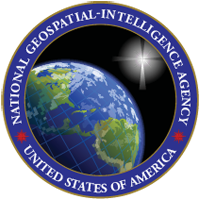 The National Geospatial-Intelligence Agency provides timely, relevant, and accurate geospatial intelligence in support of national security objectives. Information collected and processed by NGA is tailored for customer-specific solutions. By giving customers ready access to geospatial intelligence, NGA provides support to civilian and military leaders and contributes to the state of readiness of U.S. military forces. NGA also contributes to humanitarian efforts such as tracking floods and fires, and in peacekeeping. NGA is a Department of Defense Combat Support Agency. Headquartered in Springfield, Va., NGA operates major facilities in the St. Louis, Mo. and Washington, D.C. areas. The agency also fields support teams worldwide.
The National Geospatial-Intelligence Agency provides timely, relevant, and accurate geospatial intelligence in support of national security objectives. Information collected and processed by NGA is tailored for customer-specific solutions. By giving customers ready access to geospatial intelligence, NGA provides support to civilian and military leaders and contributes to the state of readiness of U.S. military forces. NGA also contributes to humanitarian efforts such as tracking floods and fires, and in peacekeeping. NGA is a Department of Defense Combat Support Agency. Headquartered in Springfield, Va., NGA operates major facilities in the St. Louis, Mo. and Washington, D.C. areas. The agency also fields support teams worldwide.
National Reconnaissance Office
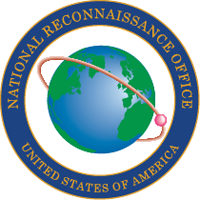 The National Reconnaissance Office designs, builds and operates the nation's reconnaissance satellites. NRO products, provided to an expanding list of customers like the Central Intelligence Agency and the Department of Defense, can warn of potential trouble spots around the world, help plan military operations, and monitor the environment. As part of the Intelligence Community, the NRO plays a primary role in achieving information superiority for the U.S. Government and Armed Forces. A DOD agency, the NRO is staffed by DOD and CIA personnel. It is funded through the National Reconnaissance Program, part of the National Foreign Intelligence Program.
The National Reconnaissance Office designs, builds and operates the nation's reconnaissance satellites. NRO products, provided to an expanding list of customers like the Central Intelligence Agency and the Department of Defense, can warn of potential trouble spots around the world, help plan military operations, and monitor the environment. As part of the Intelligence Community, the NRO plays a primary role in achieving information superiority for the U.S. Government and Armed Forces. A DOD agency, the NRO is staffed by DOD and CIA personnel. It is funded through the National Reconnaissance Program, part of the National Foreign Intelligence Program.
National Security Agency/Central Security Service
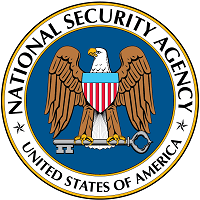 The National Security Agency/Central Security Service is the nation's cryptologic organization that coordinates, directs, and performs highly specialized activities to protect U.S. information systems and to produce foreign signals intelligence information. A high-technology organization, NSA is at the forefront of communications and information technology. NSA is also one of the most important centers of foreign language analysis and research within the U.S. government and is said to be the largest employer of mathematicians in the United States and perhaps the world. Founded in 1952, NSA is part of the Department of Defense and a member of the U.S. Intelligence Community. The Agency supports military customers, national policymakers, and the counterterrorism and counterintelligence communities, as well as key international allies. Its workforce represents an unusual combination of specialties: analysts, engineers, physicists, mathematicians, linguists, computer scientists, researchers, as well as customer relations specialists, security officers, data flow experts, managers, administrative officers and clerical assistants.
The National Security Agency/Central Security Service is the nation's cryptologic organization that coordinates, directs, and performs highly specialized activities to protect U.S. information systems and to produce foreign signals intelligence information. A high-technology organization, NSA is at the forefront of communications and information technology. NSA is also one of the most important centers of foreign language analysis and research within the U.S. government and is said to be the largest employer of mathematicians in the United States and perhaps the world. Founded in 1952, NSA is part of the Department of Defense and a member of the U.S. Intelligence Community. The Agency supports military customers, national policymakers, and the counterterrorism and counterintelligence communities, as well as key international allies. Its workforce represents an unusual combination of specialties: analysts, engineers, physicists, mathematicians, linguists, computer scientists, researchers, as well as customer relations specialists, security officers, data flow experts, managers, administrative officers and clerical assistants.
Navy Intelligence
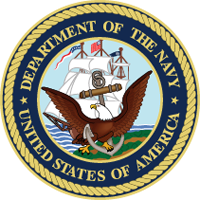 Under the direction of the Director of Naval Intelligence, the U.S. Navy’s intelligence team is the leading provider of maritime intelligence to Navy and joint/combined warfighting forces, as well as national decision makers and other partners/consumers in the U.S. National Intelligence Community. Naval Intelligence is comprised of active duty and reserve military, and civilian personnel, serving at sea and ashore around the world.
Under the direction of the Director of Naval Intelligence, the U.S. Navy’s intelligence team is the leading provider of maritime intelligence to Navy and joint/combined warfighting forces, as well as national decision makers and other partners/consumers in the U.S. National Intelligence Community. Naval Intelligence is comprised of active duty and reserve military, and civilian personnel, serving at sea and ashore around the world.
Space Force Intelligence
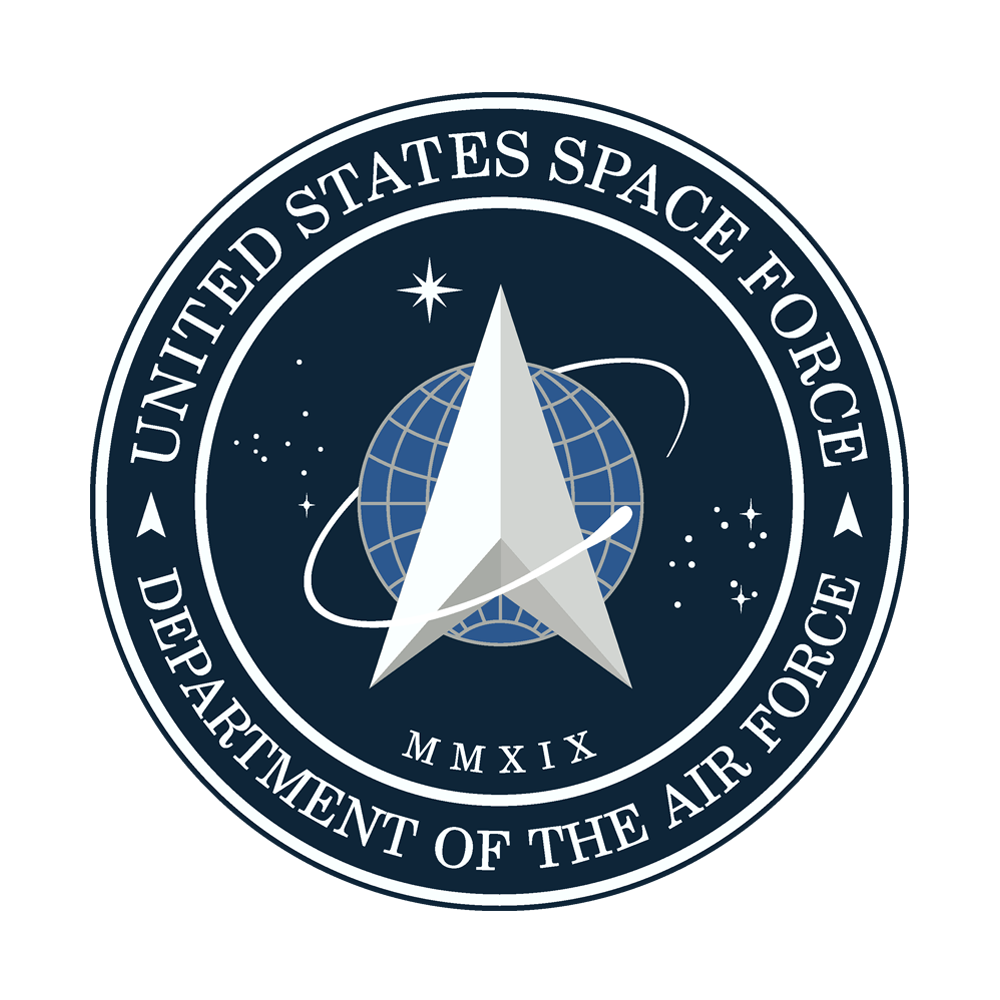 The U.S. Space Force (USSF) is a new branch of the Armed Forces. It was established on December 20, 2019 with enactment of the Fiscal Year 2020 National Defense Authorization Act and will be stood-up over the next 18 months. The USSF was established within the Department of the Air Force, meaning the Secretary of the Air Force has overall responsibility for the USSF, under the guidance and direction of the Secretary of Defense. Additionally, a four-star general known as the Chief of Space Operations (CSO) serves as the senior military member of the USSF.
The U.S. Space Force (USSF) is a new branch of the Armed Forces. It was established on December 20, 2019 with enactment of the Fiscal Year 2020 National Defense Authorization Act and will be stood-up over the next 18 months. The USSF was established within the Department of the Air Force, meaning the Secretary of the Air Force has overall responsibility for the USSF, under the guidance and direction of the Secretary of Defense. Additionally, a four-star general known as the Chief of Space Operations (CSO) serves as the senior military member of the USSF.




